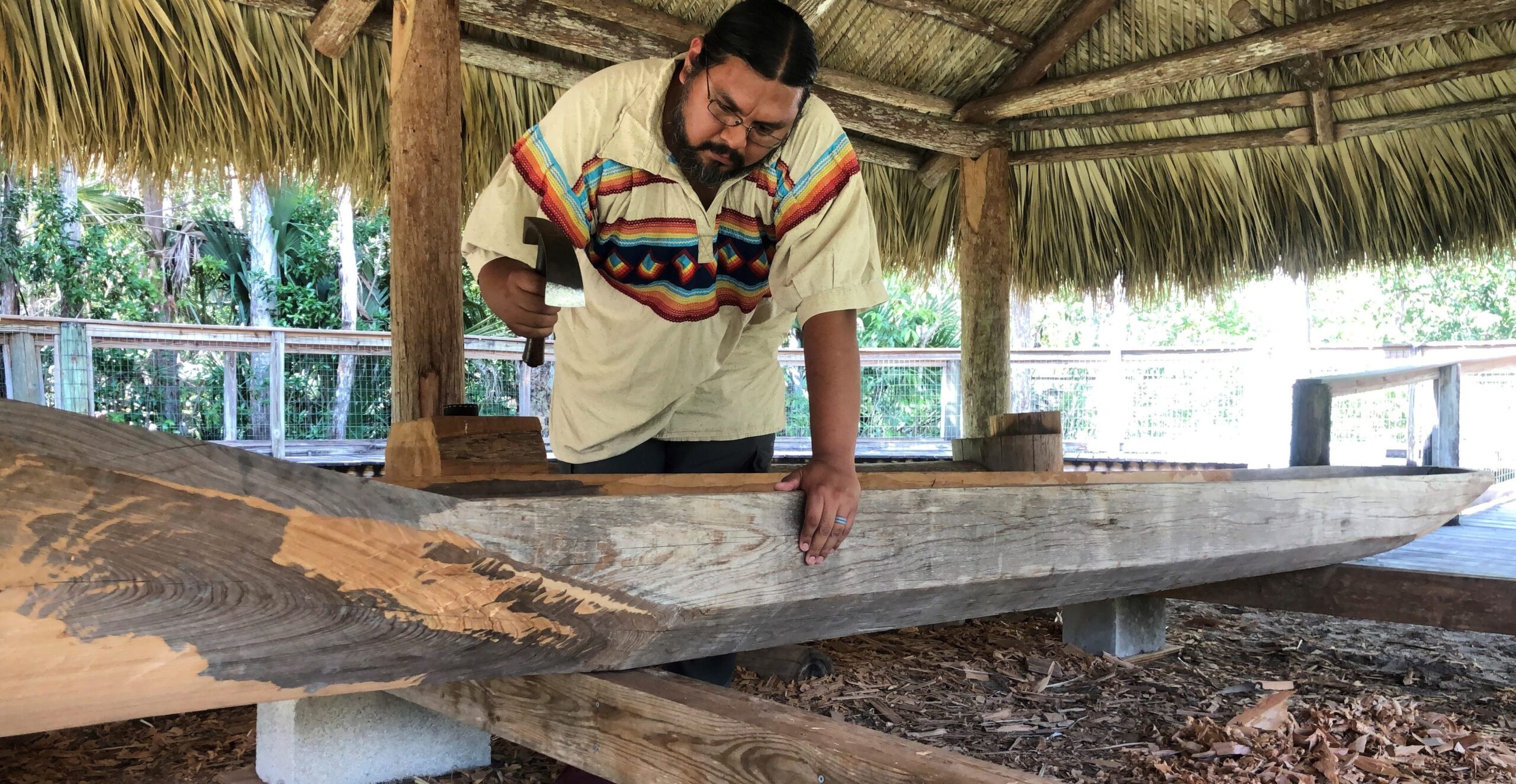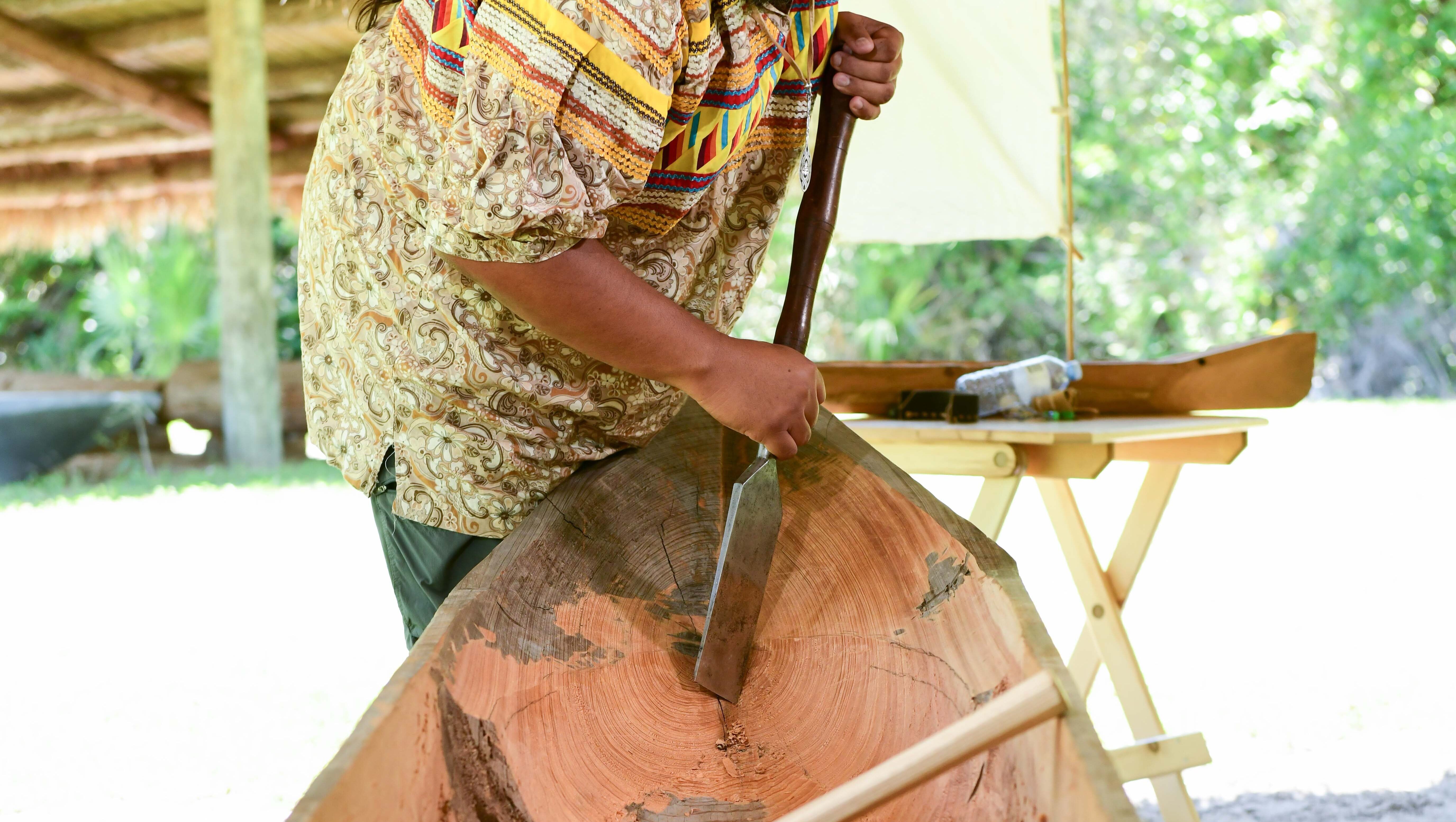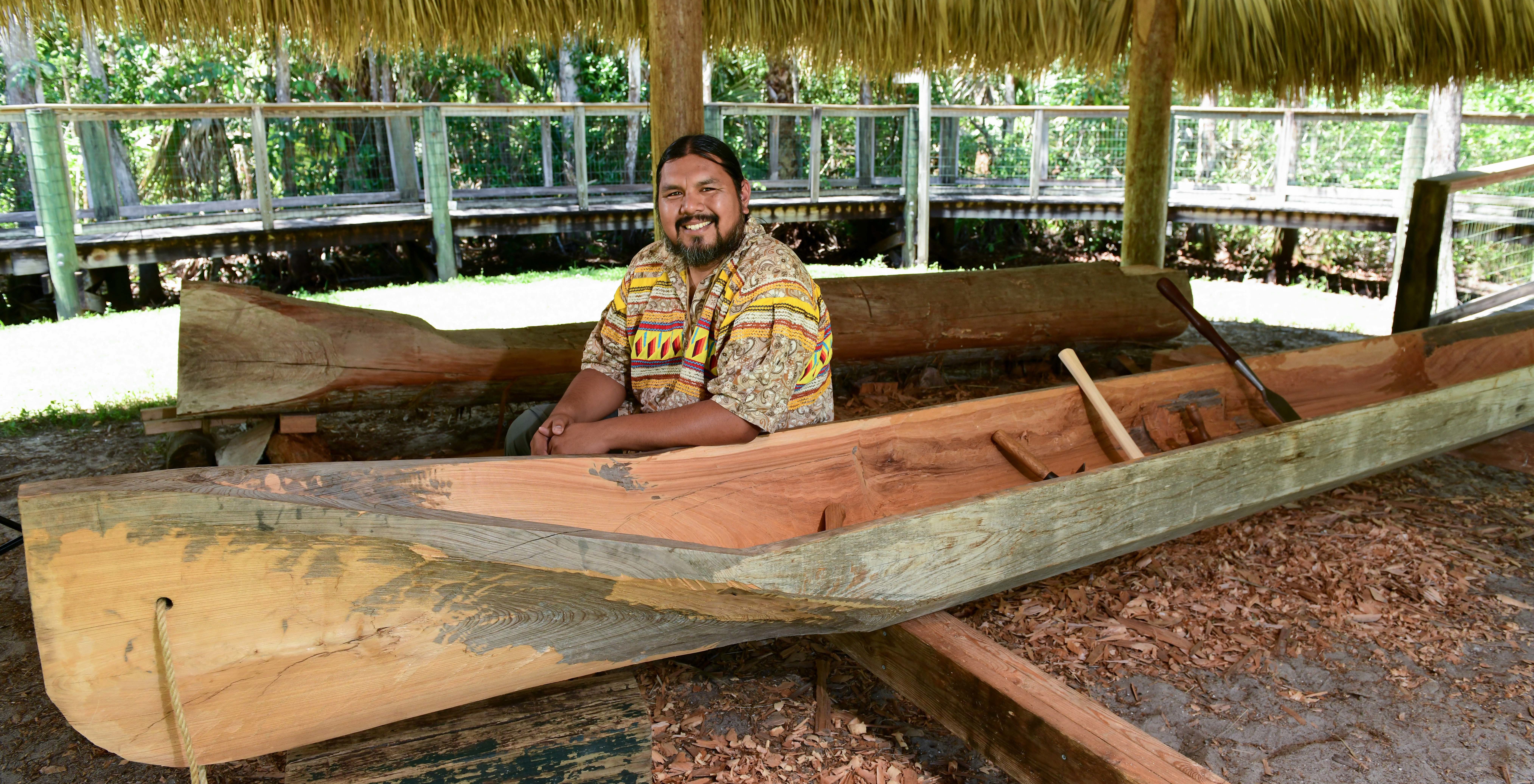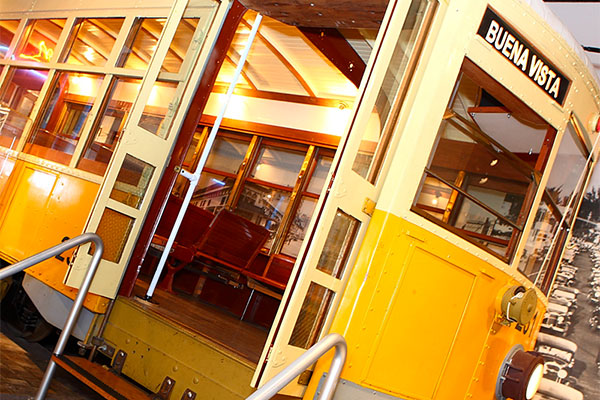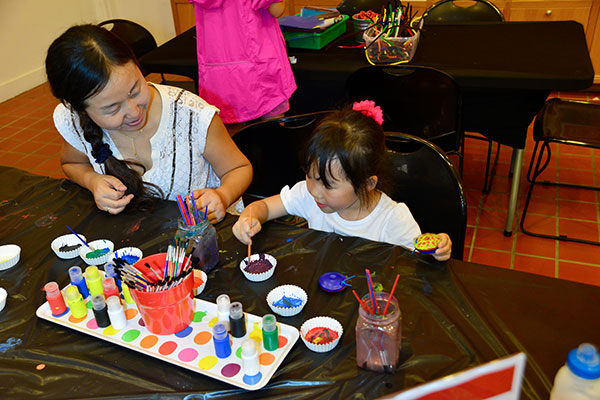Artist Pedro Zepeda specializes in a variety of traditional Seminole arts, including woodworking, leatherwork, beading, patchwork, and basket weaving. He learned many of these traditions from his grandmother, Tahama Osceola, and other family members. As an adult, he focuses on the art of dugout canoe carving, an art he learned from experienced Tribal members such as Ingram Billie Jr. and his brother Brian Zepeda. Pedro is also a contemporary visual artist who strives to preserve his cultural traditions while incorporating them into modern times. He has exhibited his work at the Collier County Museum and participated in the Tribal Arts Project at the Upper Room Art Gallery. Currently a demonstrator and educator at the Ah-Tah-Thi-Ki Museum, Pedro presents at events across the country, sharing his passion for Seminole culture.
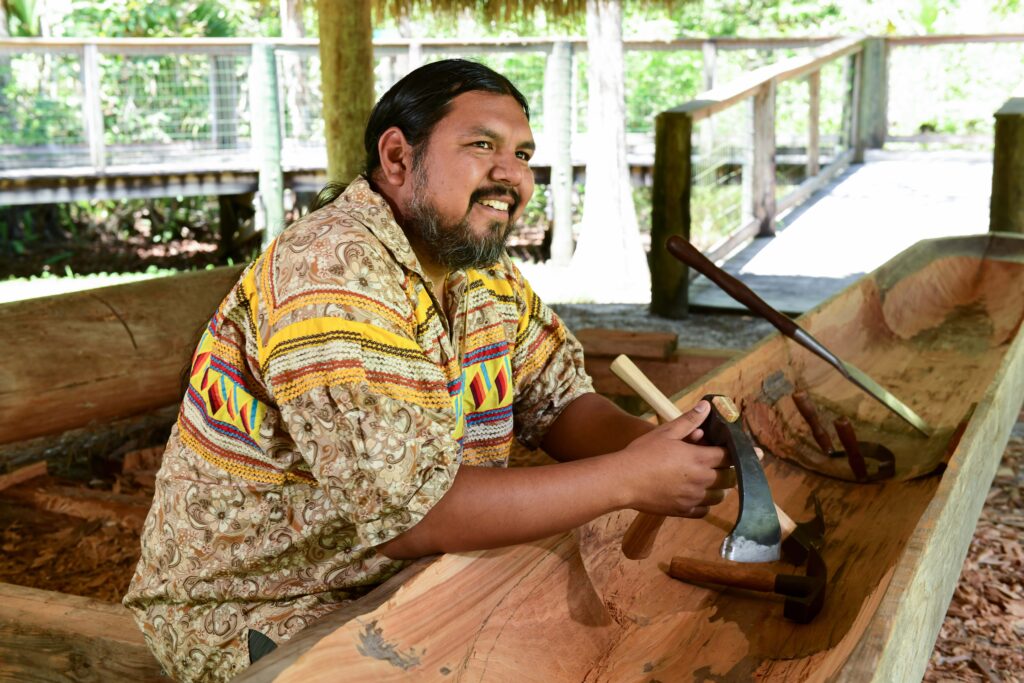
More about Pedro
The following is from an interview HistoryMiami Museum conducted with Pedro Zepeda in 2019.
1. Where were you born? Where is your family from?
I was born and raised in Naples, FL. My mother’s family is from Florida (Seminole) and my father’s family is from Texas and Mexico. My Grandpa Cory Osceola moved to Naples in 1964 and opened a tourist camp on US 41 in Naples, which had a gift shop and some alligators for tourists to see.
2. What kinds of Seminole arts do you practice?
I do woodcarving, basketry, sewing traditional clothing, and leatherwork.
3. How did you learn these traditions? Who taught you?
I’ve always drawn and created as long as I can remember. When I was about 14 years old is when I really took serious interest in learning my tribe’s traditional arts. I began to try and carve my own bows and make our older style of baskets made from Saw Palmetto stems. My grandmother showed me what she knew about these baskets. She never made this type but told me what she remembered her mother and aunt doing. She also had several of their baskets for me to look at to learn how to weave them. I learned a lot about carving from Ingram Billie Jr. as well as from my older brother Brian Zepeda. Ingram worked at the Ah-Tah-Thi-Ki Museum on the Big Cypress Seminole Reservation as a woodcarver when I was a teenager. I would go out with him when he collected wood and sit with him in the museum village. That’s when I learned a lot of the basics of Seminole woodcarving. In 2005, I began working at the Ah-Tah-Thi-Ki Museum. When I became the Traditional Arts Coordinator for the museum, I was able to hone my traditional arts skills.
4. How have you evolved over the years as a traditional artist?
I’ve spent many years working on refining my skills as a traditional artist and maintaining the spirit and quality in both form and function. Spending time collecting my own materials, speaking with elders and family, and creating these traditional arts have taught me that our arts are so much more than just creating objects. I’m at a point where I want to bring some of these arts and skills to another level and expand their cultural reach.
5. Tell me about how you preserve your cultural traditions while incorporating them into modern times.
When creating traditional art, for me it’s important to maintain the functionality of that object while also maintaining the cultural etiquette that goes with making these arts. What tools are used isn’t always as important as remembering the traditional rules to create and use our art. So I will use modern tools alongside hand tools and use whichever does that job better. My ancestors used the most modern technology hundreds of years ago when they began using steel tools in place of stone and shell. And I use electric and gas powered tools to carry out some jobs, especially when making canoes. Even though we may not need baskets and canoes for our daily lives at this point in our history, the knowledge and stories they have to teach are still so important.
6. How are the traditional arts you practice tied to the environment?
Canoe carving, basket making, gathering medicine, and leatherwork are all very directly connected to the environment. How can we fully appreciate the environment if we don’t know how to use it? Simply having a tactical connection to the natural world gives so much understanding and knowledge. Water quality and supply is becoming increasingly important. I think more and more people are realizing that clean water isn’t an infinite resource if not cared for properly. Making and using dugout canoes has such a strong connection to the water. Canoes have a way of constantly reminding us of the water and its importance.
7. Tell me about the kinds of tools and techniques you use.
When I make canoes, of course I need to locate a tree large enough to make a canoe. This is one of the hardest parts. I’ve used local trees that have fallen in hurricanes and logs recovered from river bottoms in South Carolina. I avoid using standing Cypress trees since old growth is so rare anymore due to the intense commercial logging that took place in Florida. When I begin to carve a lot of the early, heavy wood, removal is done with a combination of chainsaw and axe. After about 80-90 percent of the canoe is complete, then I’ll switch to hand tools such as my adzes and inshaves.
8. What do you value most about practicing these traditions?
I value the connection to my teachers and ancestors and their knowledge as well as having the ability to pass that knowledge along to the next generation.


